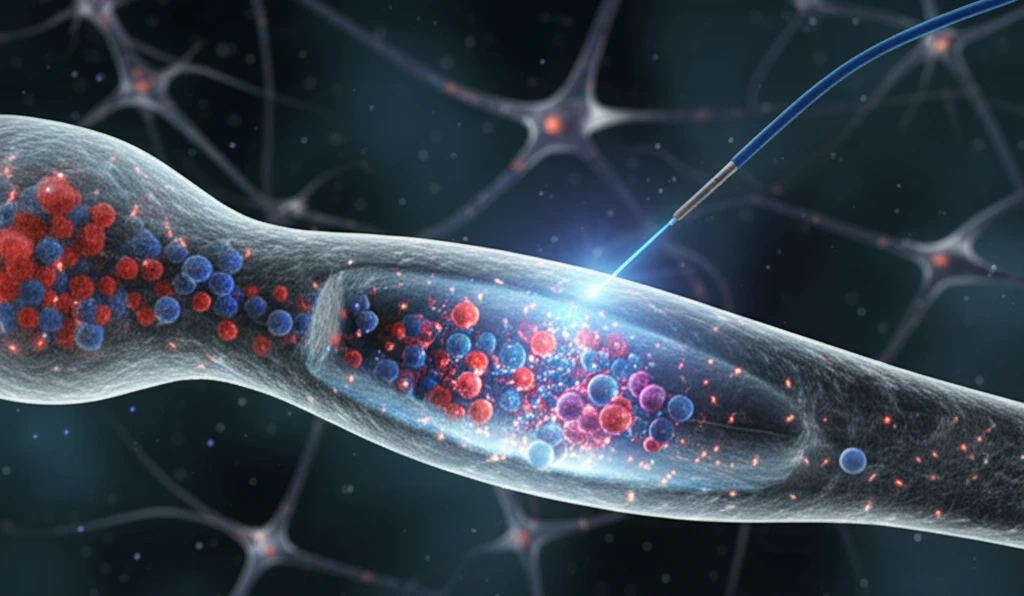
Decoding Dopamine: How New Electrode Tech Can Help Us Understand Brain Chemistry
"Scientists develop innovative methods for detecting dopamine in the brain, paving the way for breakthroughs in understanding neurological disorders."
Dopamine, ascorbic acid (AA), and uric acid (UA) are crucial compounds in biomedicine and neurochemistry. Dopamine (DA), a neurotransmitter, facilitates message transfer within the central nervous system. It influences central nervous, renal, hormonal, and cardiovascular systems, also playing a role in addiction and Parkinson's disease treatments. Ascorbic acid, or Vitamin C, is integral to life processes, preventing the common cold and mental illnesses. Uric acid, a product of purine metabolism, indicates diseases like gout when at abnormal levels. Monitoring these compounds is essential for understanding health.
Simultaneous detection of DA, AA, and UA poses challenges. Direct electrochemical oxidation at bare electrodes is reversible and requires high potential. DA and AA oxidize at similar potentials, complicating differentiation. Researchers have developed techniques like electrophoresis, chromatography, and chemiluminescence for detection, but electrochemical methods with modified electrodes offer promise for simultaneous detection.
Recent advances in electrode modification via electropolymerization enhance sensitivity, selectivity, and reproducibility. Modifying electrodes with substances like N, N-dimethylaniline and styrene sulphonic acid has shown promise in detecting DA in the presence of AA. This work explores using a poly (brilliant blue) modified carbon paste electrode to simultaneously determine DA in the presence of AA and UA at physiological pH.
What is Poly (Brilliant Blue) and Why Use It?

The study fabricates a poly (brilliant blue) modified carbon paste electrode to detect dopamine in the presence of high concentrations of ascorbic acid and uric acid at physiological pH. Brilliant Blue, a triphenylmethane dye, is commonly used for staining proteins in analytical biochemistry and as a food colorant.
- Enhanced Sensitivity: Poly (brilliant blue) modification improves the sensitivity of dopamine detection.
- Simultaneous Detection: The modified electrode can simultaneously detect DA, AA, and UA.
- Physiological Relevance: The electrode functions effectively at physiological pH, mimicking biological conditions.
- Electrocatalytic Activity: The modification enhances the electrocatalytic activity towards dopamine oxidation.
Why This Research Matters
This research offers a promising method for detecting dopamine in complex biological environments. The poly (brilliant blue) modified electrode shows improved electrocatalytic activity, sensitivity, and stability. This innovation can advance research into neurological disorders and electroactive pharmaceutical compounds.
